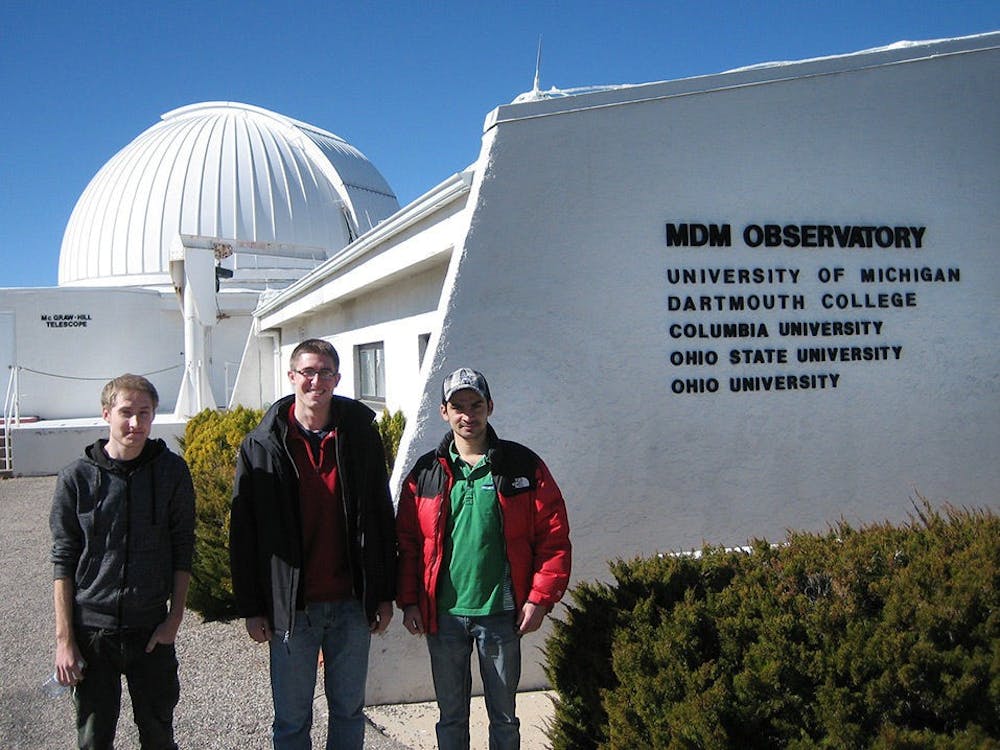OU partners with universities to share use and cost of MDM Observatory
Twice a year, Sean McGraw restructures his sleep schedule so that it aligns with the stars — or in his case, the galaxies.
McGraw, a fifth-year graduate student studying astrophysics, has, along with his peers at Ohio University, been able to do first-hand research for his dissertation by collecting data at the MDM Observatory in Kitt Peak, Arizona — the only observatory the university partly owns.
“We’re a little unusual,” said Joseph Shields, OU’s vice president for Research and Creative Activity and an astrophysics professor.
Shields said few public universities in the state have this type of access to telescopes.
OU shares the observatory with The Ohio State University, Columbia University, the University of Michigan and Dartmouth College.
The partnership, finalized in 2005, developed after the Physics and Astronomy Department submitted a proposal to OU for observatory access. OU paid a $375,000 buy-in to own one-twelfth of the observatory, which houses two telescopes, and now pays tens of thousand dollars a year in operating costs.
This year, OU is paying about $38,000 for access to both telescopes 23 nights of the year, said Doug Clowe, associate professor of physics and astronomy.
“In terms of value for money, this observatory is very good,” Clowe said.
The next class of telescopes, which have broader capabilities, cost about $500,000 a year for the same number of nights, Clowe said.
The lower price allows the university to take all undergraduate and graduate astrophysics majors to the observatory at least once during their tenure at OU, he added.
“It’s not only provided me with data, but it’s also taught me the actual process of collecting data, which is not trivial I suppose,” McGraw said.
McGraw’s dissertation, which studies activity in the center of galaxies, primarily draws from research he has gathered during the 30 to 40 nights he has spent using one of the telescopes in Arizona throughout the past three years.
Faculty utilizes the telescopes to conduct research and enhance their teaching techniques as well.
“We can basically do more experimental-type things, things that we don’t know if they are going to actually work,” Clowe said.
And he often lets students tag along.
“They get to go and basically be the observatory assistant,” Clowe said.
Researchers usually rise at 1 p.m. and start preparing for the night, Clowe said. Then they work with the telescopes until the sun hits the horizon.
“It’s essentially going to the third shift without any prior notice,” McGraw said. “The first shift is usually pretty rough. Usually I don’t get used to it until night three.”
The researchers usually spend about a week gathering data and learning to operate the telescopes, McGraw said.
“For the students, I think it has been a fantastic resources of giving them access to a high quality research facility (and) giving them a hands-on learning experience,” Shields said.
@OHITCHCOCK
OH271711@ohio.edu






